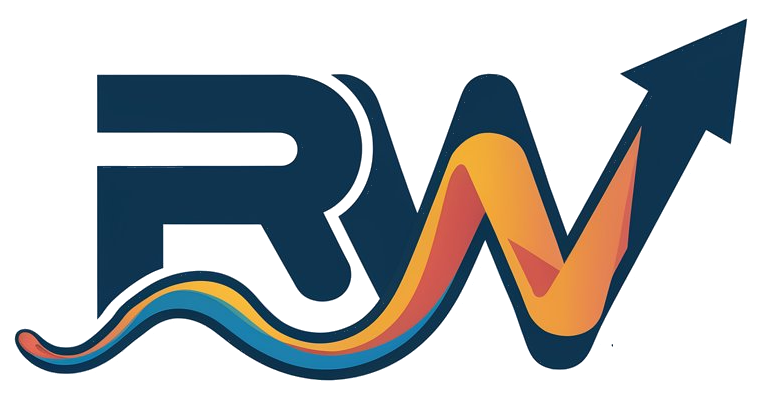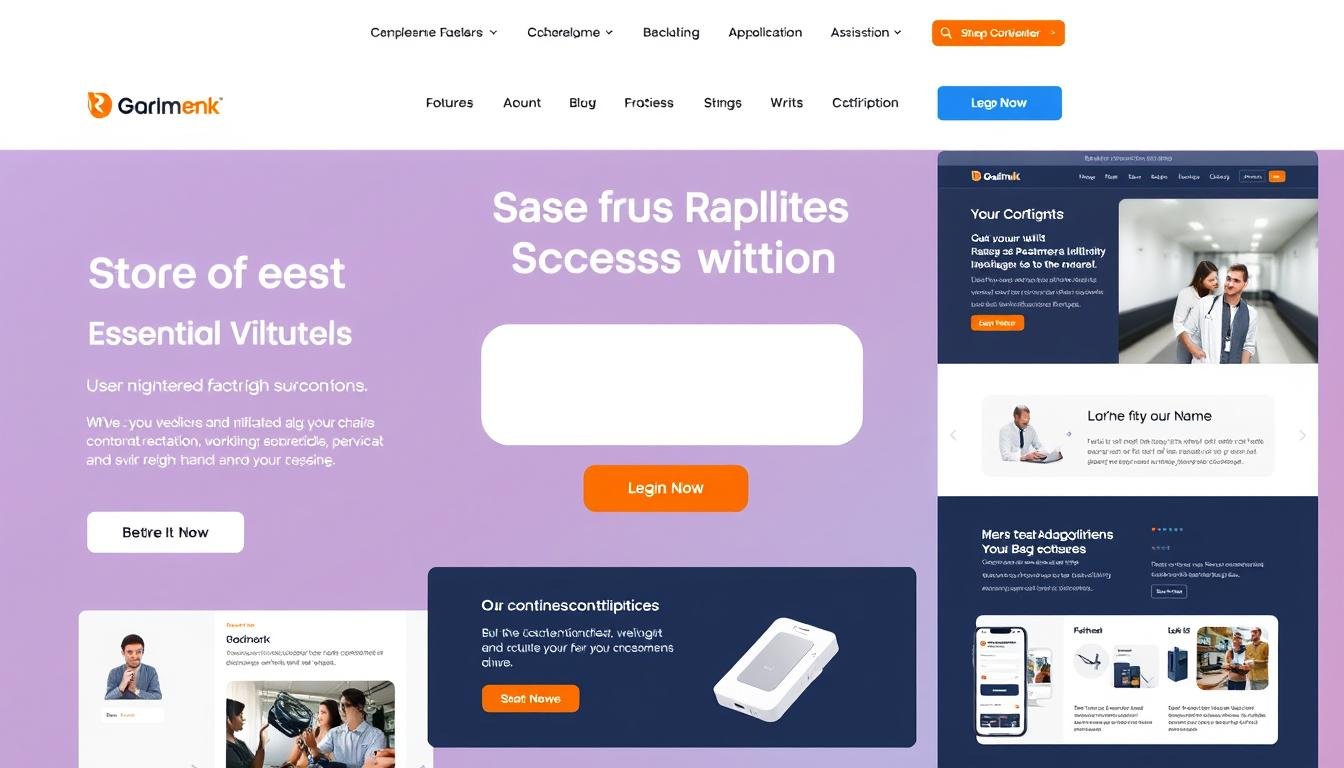In the Australian market, a high-converting business website is crucial for driving online success. In fact, integrating videos into a website is known to increase conversion rates by up to 20%. To achieve this, your website must incorporate 15 key features that address user experience, content strategy, and technical optimization.
Key Takeaways
- A high-converting business website must offer a user-friendly design and navigation to engage visitors.
- Compelling content and a clear value proposition are essential for attracting and converting customers.
- Optimization for mobile devices and fast site speed can significantly improve the customer experience.
- Leveraging social proof and customer reviews builds trust and credibility with potential customers.
- Effective call-to-action strategies are crucial for driving desired actions from website visitors.
What is a High-Converting Business Website?
In the dynamic Australian market, a high-converting business website is crucial for driving online success. With 97% of consumers researching businesses online before engaging with them, a well-designed and optimized website can make a significant difference in attracting and converting customers. By focusing on website conversion, businesses can boost their online presence, better engage their target audience, and ultimately drive sales growth.
Understanding the Concept of High Conversion
A high-converting business website is one that has a higher-than-average conversion rate, meaning a larger percentage of visitors take the desired action, such as making a purchase, signing up for a newsletter, or filling out a contact form. The average conversion rate for landing pages is 9.7%, but this can vary significantly by industry. Factors like traffic quality, user experience, and the clarity of the value proposition can all impact a website’s conversion rate.
Importance of Website Conversion for Businesses
Website conversion metrics are crucial for businesses in Australia, as they provide valuable insights into the effectiveness of their website marketing efforts. By understanding and optimizing their conversion rates, businesses can enhance their customer engagement, improve their sales growth, and ultimately, drive the overall success of their online presence.
“A high-converting business website is essential for driving success in the digital age, where online presence is paramount for attracting and retaining customers.”
Key Elements of a High-Converting Website
Creating a high-converting business website requires a strategic focus on two key elements: user-friendly design and navigation, as well as compelling content that showcases your value proposition.
User-Friendly Design and Navigation
A seamless user experience is crucial for driving conversions on your website. This means presenting a clear and intuitive layout, with easy-to-find information and a smooth customer journey. Responsive design that optimizes the experience across devices is also essential, as 53% of mobile site visitors leave a page that takes longer than three seconds to load, emphasizing the importance of fast loading speed for user retention.
Compelling Content and Value Proposition
In addition to a strong user experience, a high-converting website must feature content that clearly communicates your business’s value proposition. This means highlighting the key benefits customers will receive, rather than just listing product features. By focusing on the “why” behind your offering, you can create content that resonates and drives conversions.
To further enhance your website’s conversion potential, consider incorporating social proof elements, such as customer reviews and testimonials. 88% of consumers trust online reviews as much as personal recommendations, underscoring the impact of user-generated content on building trust and credibility.
| Key Element | Benefit |
|---|---|
| User-Friendly Design and Navigation | Provides a seamless customer journey, reducing bounce rates and increasing engagement. |
| Compelling Content and Value Proposition | Clearly communicates the unique advantages of your product or service, driving conversions. |
| Social Proof (Reviews and Testimonials) | Builds trust and credibility, which can positively influence purchasing decisions. |
“A study by Backlinko found that the average Google first page result contains 1,447 words, indicating the importance of compelling and extensive content for improving search engine rankings.”
Optimizing for Mobile and Site Speed
In today’s digital landscape, where over half of all internet traffic originates from mobile devices, businesses must prioritize mobile optimization and site speed to drive higher conversion rates. Providing a seamless mobile experience is crucial, as studies show that users are more likely to abandon a website if it takes too long to load or is not optimized for their devices.
Responsive design plays a vital role in delivering a consistent user experience across different devices, leading to increased engagement and conversion rates. Touch-friendly buttons, forms, and intuitive mobile-friendly navigation menus are essential elements that can significantly impact the user experience and ultimately, the conversion rate.
Moreover, site speed is a critical factor in keeping visitors engaged and driving conversions. Slow page load times can frustrate users, leading to high bounce rates and negatively impacting the overall conversion rate. Businesses must optimize their websites for speed, ensuring that pages load quickly and efficiently, even on mobile devices.
By focusing on mobile optimization and site speed, businesses can provide a positive user experience and drive higher conversion rates. This involves optimizing images, streamlining content, and implementing best practices for mobile-friendly design and responsive development.
“Mobile phones surpassed other digital devices (desktop, tablet) in the number of ecommerce purchases made in 2019.”
Ultimately, a well-optimized website that delivers a seamless mobile experience and lightning-fast load times can be a game-changer for businesses looking to maximize their online conversions and drive growth.
High-Converting Business Website
When it comes to website conversion rates, the average typically falls between 2-5%. However, savvy businesses strive to achieve “high-converting” rates, generally considered to be above 5%. The definition of a “good” conversion rate can vary significantly by industry, with e-commerce websites often seeing rates around 12.9% and real estate sites averaging 7.4%. Understanding these industry benchmarks and setting clear conversion goals is crucial for businesses to gauge the success of their website and marketing efforts.
Factors Influencing Website Conversion Rates
A website’s conversion rate is influenced by a variety of factors, including the overall user experience, the clarity and appeal of the value proposition, the use of social proof (e.g., testimonials, reviews, partner logos), and the effectiveness of the call-to-action. Businesses must carefully optimize each of these elements to drive higher website conversion rates and achieve their online goals.
| Industry | Average Conversion Rate |
|---|---|
| E-commerce | 12.9% |
| Real Estate | 7.4% |
| Technology | 5.2% |
| Professional Services | 3.8% |
It’s important to note that while the overall website conversion metrics provide a helpful benchmark, what constitutes a “high-converting” website can vary significantly by industry benchmarks and the specific goals of the business. Careful analysis and optimization of the key elements that influence conversion are essential for achieving success.
“Nearly two-thirds of consumers indicate that positive customer testimonials increase their trust in a business, directly impacting their willingness to convert.”
Businesses must also consider the growing importance of user experience, value proposition, and social proof in driving higher website conversion rates. By addressing these factors and continuously optimizing the customer journey, businesses can unlock the full potential of their online presence and achieve their conversion goals.
Leveraging Social Proof and Customer Reviews
When it comes to building trust and credibility for your business website, social proof is a powerful tool. Studies show that 93% of consumers indicate that online reviews influence their purchasing decisions. In fact, 94% of individuals mention that negative reviews have led them to avoid a business.
Positive customer reviews and social proof can have a significant impact on your website’s conversion rates. In fact, studies have shown that displaying reviews can increase conversion rates by up to 270%. By showcasing that others have had positive experiences with your business, you can effectively break down barriers to purchase and encourage potential customers to take action.
Building Trust and Credibility
Leveraging customer reviews and social proof is crucial for building trust and credibility with your website visitors. 50% of consumers rely on online reviews as much as personal recommendations from friends and family, and 91% of individuals in the 18-34 age group trust online reviews as much as personal recommendations.
In addition to customer reviews, other forms of social proof can also enhance your credibility, such as:
- Expert social proof – Endorsements from credible experts in your industry
- Celebrity social proof – Leveraging the influence of well-known figures to promote your products or services
- User-generated content – Feedback, testimonials, and reviews from your customers
- Referrals and recommendations – Encouraging existing customers to recommend your business to friends and family
By prominently displaying these forms of social proof on your website, you can effectively build trust, establish credibility, and encourage potential customers to take the desired action.
“Positive social proof is essential for building trust and credibility with your website visitors. Leveraging customer reviews, testimonials, and other forms of social proof can significantly boost your conversion rates.”
Effective Call-to-Action Strategies
When it comes to driving conversions on your business website, crafting compelling calls-to-action (CTAs) is crucial. Your CTAs should encourage visitors to take the desired action, whether that’s making a purchase, signing up for a newsletter, or contacting your company. Effective CTA strategies involve using persuasive copy, strategic placement, and visually appealing elements that grab users’ attention and compel them to click through.
One key element of a high-converting CTA is using action-oriented verbs like “Buy,” “Shop,” “Order,” or “Download.” These verbs create a sense of urgency and direct the user to take immediate action. Additionally, incorporating numbers and statistics can enhance the effectiveness of your CTAs. For example, a CTA like “Get 20% Off Your First Order” can be more compelling than a generic “Buy Now” button.
Strategically placing your CTAs throughout your website is also crucial for conversion optimization. Prominent placement above the fold, as well as on key pages like the homepage, product pages, and blog posts, can ensure your CTAs are visible and accessible to your audience.
| CTA Placement | Conversion Impact |
|---|---|
| Above the Fold | 80% increase in clicks |
| Blog Posts | 83% increase in revenue |
| Landing Pages | 80% increase in clicks |
By incorporating effective call-to-action strategies, you can significantly boost user engagement and improve your overall website conversion rates. Continuously testing and optimizing your CTAs based on user behavior and data can help you find the most successful approaches for your business.

Remember, a well-crafted CTA can be the difference between a visitor leaving your site and a visitor taking the desired action. By focusing on user engagement and conversion optimization, you can unlock the full potential of your business website.
Conversion Rate Optimization (CRO) Techniques
Ongoing conversion rate optimization (CRO) is essential for continuously improving your website’s performance. A key CRO technique is A/B testing, which involves creating and comparing two versions of a web page or element to determine which performs better. By analyzing the results of these tests and making data-driven decisions, businesses can iteratively optimize their website and drive higher conversion rates. CRO should be an ongoing process, with businesses regularly testing and refining their strategies.
A/B Testing and Data-Driven Optimization
A/B testing is a powerful tool for conversion rate optimization. By creating two variations of a web page or element and comparing their performance, you can identify the design, content, or functionality that resonates best with your target audience. This data-driven approach allows you to make informed decisions about optimizing your website for higher conversion rates.
To get the most out of A/B testing, it’s essential to have a clear understanding of your conversion goals and the user behavior data that can help you achieve them. Tools like Hotjar Funnels and Heatmaps can provide valuable insights into user interactions, while Hotjar Surveys can give you direct feedback from your audience. Analyzing this data can help you identify barriers to conversions and make targeted improvements to your website.
Remember, conversion rate optimization is an ongoing process. By continuously testing, analyzing, and refining your website, you can drive incremental improvements and achieve higher conversion rates over time. The key is to remain data-driven and user-centric in your approach to CRO.
“Conversion rate optimization (CRO) aims to increase the percentage of users or website visitors who complete a specific action to generate more leads.”
| Metric | Benchmark |
|---|---|
| Average Conversion Rate | 1% to 4% |
| Landing Page Conversion Rate | 23% |
| Increase in Logins and Orders | 36% and 4.1% respectively |
Integrating Live Chat and Customer Support
Providing excellent customer support is essential for driving user engagement and boosting conversion rates on your business website. By seamlessly integrating live chat and accessible customer service, you can create a frictionless customer journey and build trust with your audience.
Live chat functions allow your customers to receive immediate assistance and address their queries or concerns in real-time. In fact, 71% of consumers feel that immediate help can significantly improve their satisfaction. Implementing a live chat solution on your website can convert up to 4-8 times more from your existing traffic, as customers who engage with live chat are three times more likely to make a purchase.
While live chat offers the benefit of instant responses, it’s crucial to balance automation with human touch. 86% of customers still prefer to interact with customer service representatives, and 71% are less likely to engage with a brand that doesn’t have human agents available. By combining live chat with easily accessible customer support, you can create a personalized experience that addresses your customers’ needs and builds lasting relationships.
| Feature | Benefit |
|---|---|
| Conversational messaging | Allows customers to reach customer support teams and get answers quickly, with an average response time of 42 seconds. |
| Automated ticket categorization | Helps prioritize urgent issues, such as fraudulent transactions or VIP customer inquiries. |
| Multimedia messaging | Enhances engagement and provides visual support for customers. |
By leveraging the power of live chat and customer support, you can create a seamless user experience that drives higher customer engagement and conversion rates for your business.
Measuring and Tracking Website Performance
To optimize a business website for higher conversions, it’s crucial to continuously measure and track its performance using analytics tools and conversion metrics. By closely monitoring key indicators like bounce rate, exit pages, time on site, and conversion rates, businesses can gain valuable insights into how users interact with the website and which elements drive the most conversions.
Analytics Tools and Conversion Metrics
Leveraging website analytics tools, businesses can access a wealth of data-driven insights to guide their decision-making process. Some of the essential metrics to track include:
- Conversion Rate: Calculated as the number of conversions divided by the total number of visitors, this metric measures the effectiveness of the website in turning visitors into customers.
- Click-through Rate (CTR): Dividing the number of clicks by the total impressions and multiplying by 100 provides the CTR, a crucial indicator of user engagement and content relevance.
- Bounce Rate: This metric signifies the relevance of web pages and content, as it reflects the percentage of visitors who leave the site after viewing a single page.
- User Engagement Rate: Calculated as the total number of engagements divided by the reach or impressions, this rate measures the level of user interaction with the website.
- Traffic Reach: This metric tracks the total number of unique users or individuals engaged with the content, ads, or messages on the website.
By closely monitoring these website analytics, conversion metrics, and performance tracking data, businesses can make data-driven decisions to optimize their online strategy and achieve their growth objectives.

“Tracking and understanding key website metrics is crucial for making informed decisions that drive business growth. The insights derived from performance data can unlock valuable opportunities for improving the customer experience and boosting conversions.”
Conclusion
Implementing the 15 must-have features for a high-converting business website is essential for driving online success in the Australian market. By focusing on user-friendly design, compelling content, mobile optimization, social proof, effective call-to-actions, and ongoing website conversion rate optimization, businesses can attract more qualified visitors, engage them effectively, and ultimately convert them into loyal customers.
By prioritizing these key elements, businesses can build a strong online presence, increase customer engagement, and drive sustainable growth in the Australian market. Maintaining a focus on providing an exceptional user experience, leveraging social proof, and continuously optimizing your website based on data-driven insights will be crucial for achieving long-term online success.
Remember, a high-converting business website is not just about aesthetics; it’s a strategic tool that can significantly boost your revenue and propel your business forward in the competitive Australian landscape. Embrace these best practices, and watch as your website becomes a powerful asset in driving your organization’s growth and profitability.





